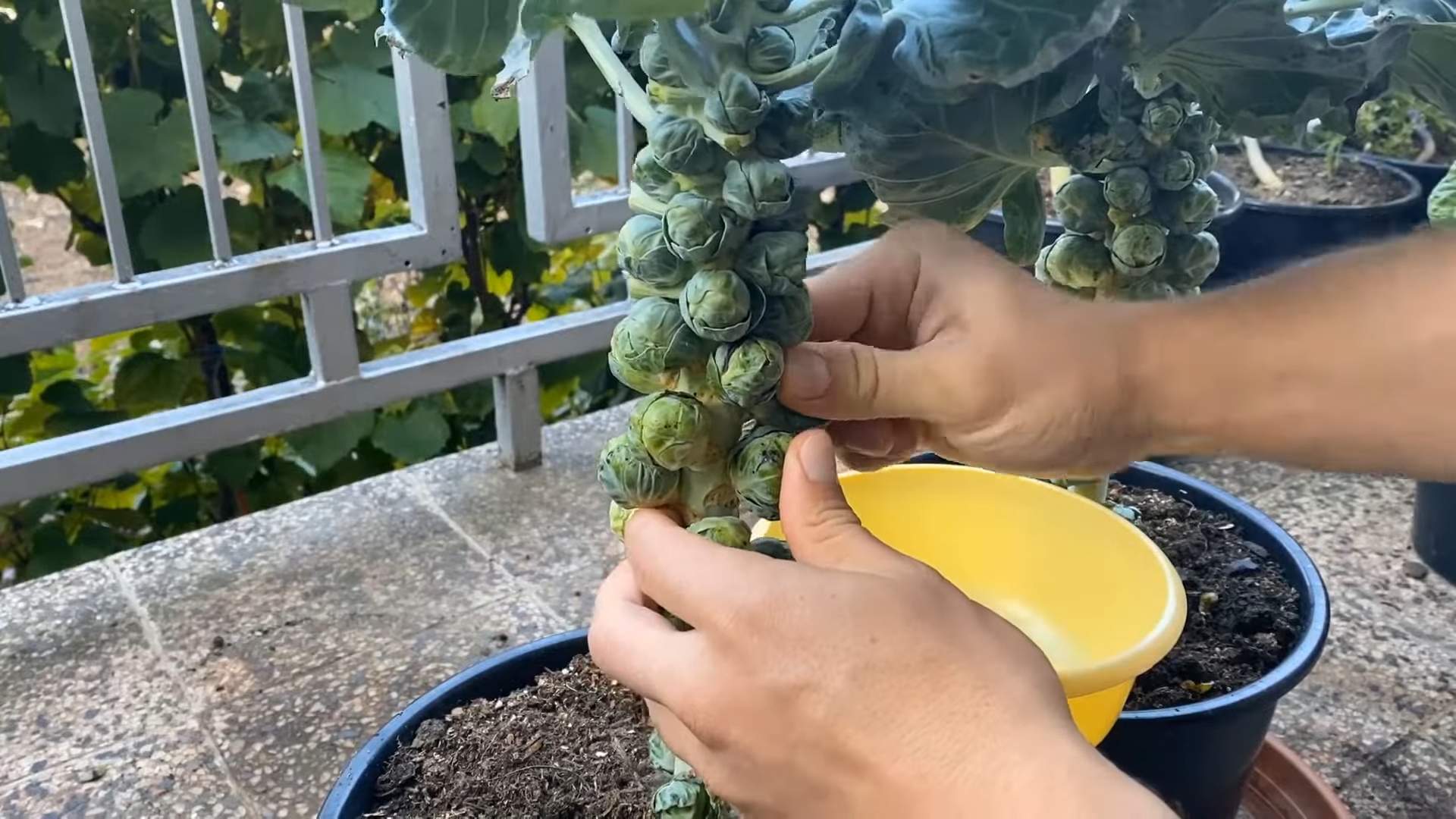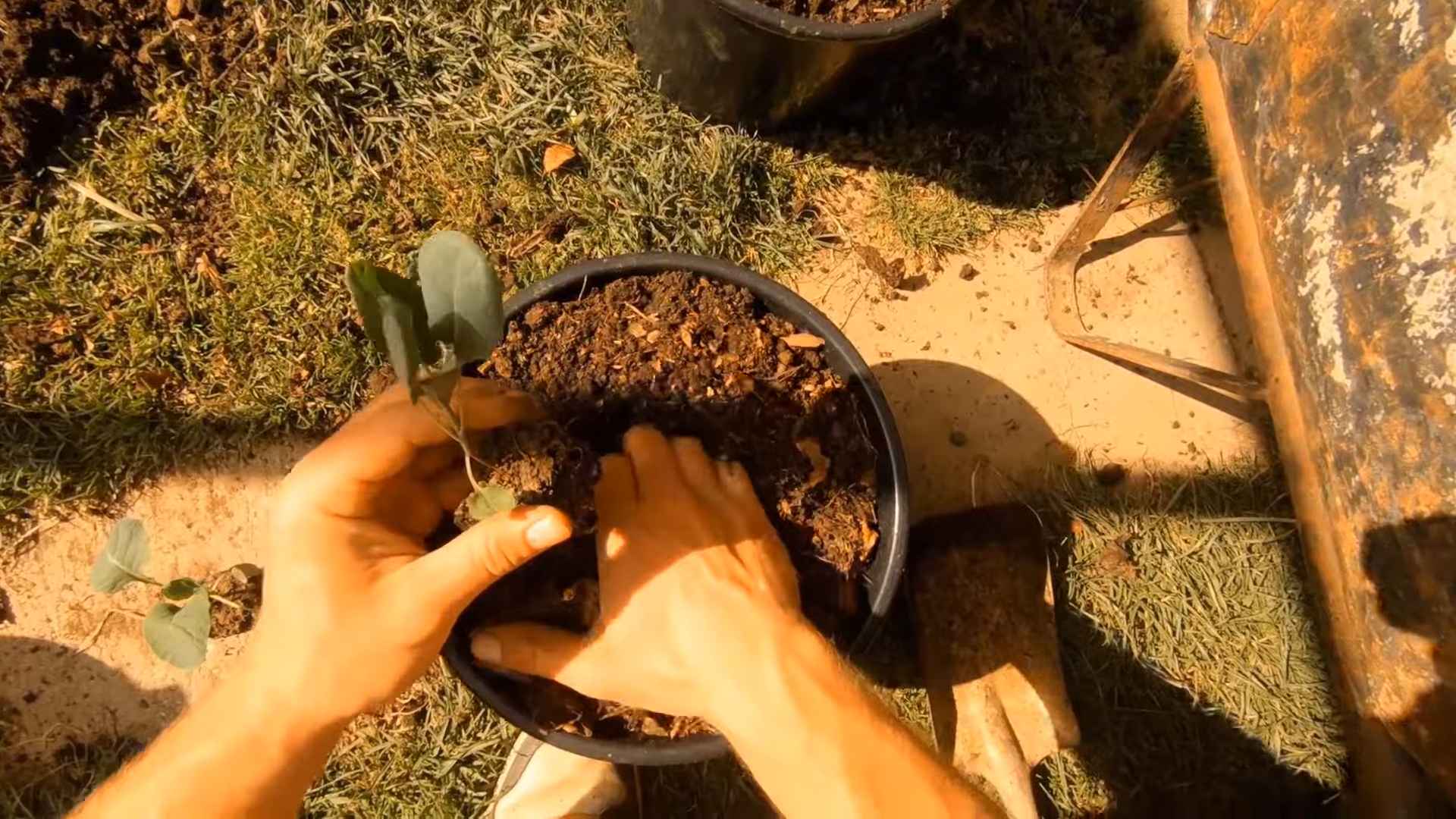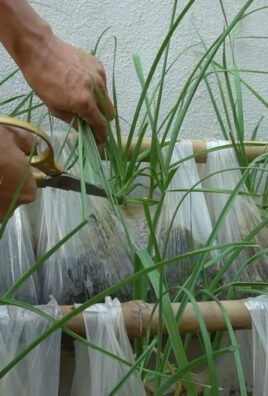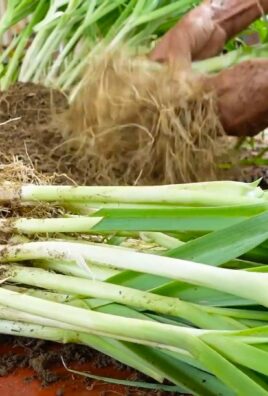Growing Brussels Sprouts Containers might seem daunting, but trust me, it’s a rewarding experience that brings fresh, homegrown goodness right to your doorstep! For centuries, Brussels sprouts have been a staple in European cuisine, with their cultivation dating back to, you guessed it, Brussels, Belgium. These mini cabbages were perfected in the 13th century, and now, you can easily cultivate them in your own backyard, even without a sprawling garden.
Are you tired of bland, store-bought Brussels sprouts? Do you dream of serving up a vibrant, flavorful side dish that you grew yourself? Well, you’re in the right place! This DIY guide will unlock the secrets to successfully growing Brussels sprouts containers, regardless of your gardening experience. We’ll cover everything from choosing the right container and soil to providing the perfect amount of sunlight and water.
Imagine the satisfaction of harvesting your own Brussels sprouts, knowing exactly where they came from and how they were grown. Not only will you enjoy the delicious taste of fresh, homegrown produce, but you’ll also save money and reduce your environmental impact. Let’s get started and transform your patio or balcony into a thriving Brussels sprouts haven!

Growing Brussels Sprouts in Containers: A Beginner’s Guide
Okay, so you want to grow Brussels sprouts, but you’re short on space? No problem! Container gardening is the answer. I’ve been growing Brussels sprouts in containers for years, and I’m here to share all my secrets to help you get a bountiful harvest, even without a huge garden. It’s easier than you think, and the satisfaction of harvesting your own homegrown sprouts is totally worth it.
Choosing the Right Container and Soil
First things first, let’s talk about the foundation of your Brussels sprouts garden: the container and the soil. This is super important, so pay attention!
* Container Size: Brussels sprouts need room to grow. I recommend a container that’s at least 12 inches in diameter and 12 inches deep. Bigger is generally better, so if you have the space, go for a 15-gallon container or larger. This will give the roots plenty of room to spread out and support those hefty sprouts.
* Material: You can use plastic, terracotta, or even fabric pots. Plastic is lightweight and retains moisture well, but terracotta looks nicer and allows for better drainage. Fabric pots are great for air pruning the roots, which encourages healthier growth. I personally prefer using large plastic containers because they are affordable and easy to move around.
* Drainage: This is non-negotiable! Make sure your container has plenty of drainage holes. Brussels sprouts hate sitting in soggy soil, which can lead to root rot. If your container doesn’t have enough holes, drill a few more.
* Soil: Don’t just grab any old dirt from your backyard. Brussels sprouts need well-draining, nutrient-rich soil. I recommend using a high-quality potting mix specifically formulated for vegetables. You can also amend your potting mix with compost or aged manure to boost its fertility. I usually mix equal parts of potting mix, compost, and perlite for excellent drainage and nutrient retention.
Planting Your Brussels Sprouts
Now that you’ve got your container and soil sorted, it’s time to get planting! You can either start your Brussels sprouts from seed or buy transplants from a nursery. I usually opt for transplants because they’re faster and easier, but starting from seed is definitely doable if you’re feeling ambitious.
* Starting from Seed: If you’re starting from seed, sow them indoors about 6-8 weeks before the last expected frost. Plant the seeds about ½ inch deep in seed-starting mix. Keep the soil moist and warm (around 70-75°F). Once the seedlings have a few sets of true leaves, you can transplant them into larger pots.
* Transplanting: Whether you started from seed or bought transplants, the process is the same. Dig a hole in the center of your container that’s large enough to accommodate the root ball. Gently remove the plant from its container and loosen the roots slightly. Place the plant in the hole and backfill with soil, making sure the top of the root ball is level with the soil surface. Water thoroughly.
* Spacing: If you’re planting multiple Brussels sprouts in the same container, space them at least 18 inches apart. This will give them enough room to grow and prevent overcrowding. I usually only plant one Brussels sprout plant per container to maximize its growth potential.
* Timing: Brussels sprouts are a cool-season crop, so the best time to plant them is in the spring or fall. In the spring, plant them after the last expected frost. In the fall, plant them about 2-3 months before the first expected frost. This will give them enough time to mature before the weather gets too cold.
Caring for Your Brussels Sprouts
Once your Brussels sprouts are planted, it’s important to provide them with the right care to ensure a healthy and productive harvest. Here’s what you need to know:
* Watering: Brussels sprouts need consistent moisture, especially during hot weather. Water deeply whenever the top inch of soil feels dry to the touch. Avoid overwatering, as this can lead to root rot. I usually water my Brussels sprouts every 2-3 days, depending on the weather.
* Fertilizing: Brussels sprouts are heavy feeders, so they need regular fertilization. Use a balanced fertilizer (like 10-10-10) every 2-3 weeks. You can also side-dress your plants with compost or aged manure. I like to use a liquid fertilizer diluted in water for easy application.
* Sunlight: Brussels sprouts need at least 6 hours of sunlight per day. Choose a location that gets plenty of sun. If you live in a hot climate, you may need to provide some afternoon shade to prevent the plants from overheating.
* Pest Control: Brussels sprouts are susceptible to a few common pests, such as cabbage worms, aphids, and flea beetles. Inspect your plants regularly for signs of infestation. You can handpick pests off the plants or use insecticidal soap or neem oil to control them. I prefer using organic pest control methods whenever possible.
* Supporting the Plants: As your Brussels sprouts grow, they may become top-heavy and require support. You can use stakes or cages to keep them upright. This is especially important in windy areas. I use tomato cages to support my Brussels sprouts, and they work great.
* Removing Lower Leaves: As the Brussels sprouts start to form, you can remove the lower leaves of the plant. This will encourage the plant to focus its energy on producing sprouts. I usually remove the leaves that are yellowing or browning.
Harvesting Your Brussels Sprouts
The moment you’ve been waiting for! Harvesting your own homegrown Brussels sprouts is incredibly rewarding. Here’s how to do it:
* Timing: Brussels sprouts are typically ready to harvest about 90-100 days after planting. The sprouts should be firm, green, and about 1-2 inches in diameter.
* Harvesting Technique: Start harvesting from the bottom of the plant and work your way up. Twist or snap off the sprouts from the stem. You can harvest the sprouts gradually as they mature.
* Storage: Brussels sprouts can be stored in the refrigerator for up to a week. For longer storage, you can freeze them. To freeze Brussels sprouts, blanch them in boiling water for 3-5 minutes, then plunge them into ice water to stop the cooking process. Drain them well and store them in freezer bags.
Troubleshooting
Even with the best care, you may encounter some problems while growing Brussels sprouts. Here are a few common issues and how to fix them:
* Yellowing Leaves: This could be a sign of overwatering, underwatering, or nutrient deficiency. Check the soil moisture and adjust your watering schedule accordingly. Fertilize your plants with a balanced fertilizer.
* Small Sprouts: This could be due to insufficient sunlight, poor soil, or overcrowding. Make sure your plants are getting enough sunlight and fertilize them regularly. If you have multiple plants in the same container, consider thinning them out.
* Pest Infestation: Inspect your plants regularly for signs of pests. Use insecticidal soap or neem oil to control infestations.
* Root Rot: This is caused by overwatering. Make sure your container has good drainage and avoid overwatering.
Extra Tips for Success
Here are a few extra tips to help you grow the best Brussels sprouts possible:
* Choose the Right Variety: Some Brussels sprouts varieties are better suited for container gardening than others. Look for compact varieties that don’t get too tall.
* Rotate Your Crops: Don’t plant Brussels sprouts in the same container year after year. Rotate your crops to prevent soilborne diseases.
* Mulch: Apply a layer of mulch around your plants to help retain moisture and suppress weeds.
* Pinch Out the Top: About a month before you want to harvest, pinch out the top of the plant. This will encourage the sprouts to mature more quickly.
* Enjoy Your Harvest: Brussels sprouts are delicious roasted, steamed, or sautéed. Experiment with different recipes and enjoy the fruits (or vegetables!) of your labor.
Growing Brussels sprouts in containers is a fun and rewarding experience. With a little bit of care and attention, you can enjoy a bountiful harvest of fresh, homegrown sprouts, even if you don’t have a lot of space. So, get out there and start planting! I promise, you won’t regret it. Happy gardening!

Conclusion
So, there you have it! Growing Brussels sprouts in containers isn’t just a possibility; it’s a surprisingly rewarding and accessible way to enjoy fresh, homegrown vegetables, even if you’re short on space. We’ve walked you through the entire process, from selecting the right container and soil to nurturing your plants and harvesting those delicious little sprouts.
Why is this DIY trick a must-try? Because it puts you in control of your food source, allowing you to enjoy the unparalleled flavor of freshly picked Brussels sprouts, free from the chemicals and long transport times often associated with store-bought produce. Imagine the satisfaction of serving a dish featuring Brussels sprouts you nurtured from tiny seedlings! Plus, container gardening offers flexibility. You can move your plants to chase the sun, protect them from harsh weather, and even bring them indoors during unexpected frosts.
But the benefits extend beyond just convenience and flavor. Growing your own food is a fantastic way to connect with nature, reduce your carbon footprint, and learn valuable gardening skills. It’s a therapeutic activity that can relieve stress and boost your overall well-being. And let’s not forget the educational aspect – it’s a wonderful way to teach children about where their food comes from and the importance of sustainable living.
Ready to take your Brussels sprouts game to the next level? Consider these variations and suggestions:
* Experiment with different varieties: While we’ve focused on general guidelines, there are numerous Brussels sprouts varieties to choose from, each with its own unique flavor and growth characteristics. Try ‘Long Island Improved’ for a classic taste, or ‘Redarling’ for a beautiful reddish-purple hue.
* Companion planting: Maximize your container space by planting companion plants alongside your Brussels sprouts. Herbs like rosemary and thyme can deter pests, while flowers like marigolds can attract beneficial insects.
* Succession planting: Extend your harvest season by planting Brussels sprouts seedlings every few weeks. This will ensure a continuous supply of fresh sprouts throughout the fall and winter.
* Fertilizer adjustments: Pay close attention to your plants’ needs and adjust your fertilizer schedule accordingly. If you notice yellowing leaves, it could be a sign of nutrient deficiency.
* Pest control: Regularly inspect your plants for pests and take action promptly. Handpicking pests, using insecticidal soap, or introducing beneficial insects are all effective methods.
Growing Brussels sprouts in containers is a journey, and there’s always something new to learn. Don’t be afraid to experiment, make mistakes, and adapt your approach as needed. The most important thing is to have fun and enjoy the process.
We’re confident that with a little effort and attention, you can successfully grow your own delicious Brussels sprouts in containers. So, grab your gardening gloves, gather your supplies, and get ready to embark on this rewarding adventure.
Now, we want to hear from you! Have you tried growing Brussels sprouts in containers before? What tips and tricks have you learned along the way? Share your experiences, successes, and challenges in the comments below. Your insights can help other gardeners learn and grow, and together, we can create a thriving community of container gardening enthusiasts. Let’s cultivate a greener, healthier world, one Brussels sprout at a time! Don’t forget to share this article with your friends and family who might be interested in this easy and rewarding DIY project. Happy gardening!
Frequently Asked Questions (FAQ)
What size container is best for growing Brussels sprouts?
The ideal container size for growing Brussels sprouts is at least 12 inches in diameter and 12 inches deep, but larger is generally better. A 5-gallon container is a good starting point, but a 10-gallon container will provide more room for the roots to grow and support a larger plant. Remember, Brussels sprouts can grow quite tall, so a sturdy container is essential to prevent tipping. Using a larger container also helps retain moisture, reducing the frequency of watering.
How much sunlight do Brussels sprouts need when grown in containers?
Brussels sprouts require at least 6 hours of direct sunlight per day to thrive. Choose a location that receives ample sunlight throughout the day. If you live in a particularly hot climate, some afternoon shade may be beneficial to prevent the plants from overheating. If you don’t have a sunny spot, consider using grow lights to supplement the natural sunlight. Rotate the containers regularly to ensure that all sides of the plant receive adequate light.
What type of soil is best for growing Brussels sprouts in containers?
Use a well-draining potting mix that is rich in organic matter. Avoid using garden soil, as it can become compacted in containers and hinder root growth. A good potting mix will retain moisture while allowing excess water to drain away, preventing root rot. You can amend the potting mix with compost or aged manure to provide additional nutrients. Consider adding perlite or vermiculite to improve drainage and aeration.
How often should I water Brussels sprouts in containers?
Water Brussels sprouts regularly, especially during hot and dry weather. The soil should be kept consistently moist, but not waterlogged. Check the soil moisture by sticking your finger about an inch deep into the soil. If it feels dry, it’s time to water. Water deeply, until water drains out of the bottom of the container. Avoid overhead watering, as this can promote fungal diseases. Mulching around the base of the plant can help retain moisture and suppress weeds.
What kind of fertilizer should I use for Brussels sprouts in containers?
Brussels sprouts are heavy feeders and require regular fertilization. Use a balanced fertilizer with an NPK ratio of 10-10-10 or 14-14-14. Apply the fertilizer according to the package instructions, typically every 2-3 weeks. You can also use organic fertilizers, such as compost tea or fish emulsion. Avoid over-fertilizing, as this can lead to excessive foliage growth at the expense of sprout development. Side-dressing with compost or aged manure can also provide a slow-release source of nutrients.
How do I deal with pests and diseases on Brussels sprouts in containers?
Regularly inspect your plants for pests and diseases. Common pests include aphids, cabbage worms, and flea beetles. Handpicking pests, using insecticidal soap, or introducing beneficial insects can help control infestations. Diseases such as clubroot and downy mildew can be prevented by using disease-resistant varieties, practicing crop rotation (if possible), and ensuring good air circulation. Remove any infected leaves or plants promptly to prevent the spread of disease.
When are Brussels sprouts ready to harvest from containers?
Brussels sprouts are typically ready to harvest 90-100 days after planting. The sprouts should be firm, green, and about 1-2 inches in diameter. Start harvesting from the bottom of the plant upwards, as the lower sprouts mature first. Twist or cut the sprouts off the stem, leaving the upper sprouts to continue developing. You can harvest Brussels sprouts over several weeks, as needed.
Can I grow Brussels sprouts in containers indoors?
While it’s possible to grow Brussels sprouts indoors, it can be challenging due to their high light requirements. You’ll need to provide at least 12-14 hours of artificial light per day using grow lights. Choose a cool location, as Brussels sprouts prefer temperatures between 60-70°F. Ensure good air circulation to prevent fungal diseases. Pollination may also be an issue, so you may need to hand-pollinate the flowers. Overall, growing Brussels sprouts outdoors in containers is generally easier and more successful.
What are some common problems when growing Brussels sprouts in containers?
Some common problems include:
* Yellowing leaves: This can be a sign of nutrient deficiency, overwatering, or underwatering.
* Small or loose sprouts: This can be caused by insufficient sunlight, poor soil, or inadequate fertilization.
* Pest infestations: Regularly inspect your plants and take action promptly.
* Disease outbreaks: Choose disease-resistant varieties and ensure good air circulation.
* Tipping containers: Use a sturdy container and provide support for tall plants.
By addressing these issues promptly, you can ensure a successful harvest of delicious Brussels sprouts.




Leave a Comment